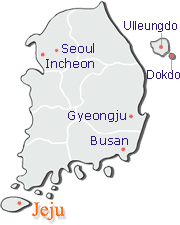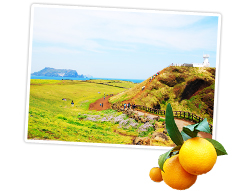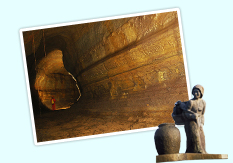Places in Korea – Han River (한강)
한강 (The Han River) has become one of the iconic symbols of Seoul, and
as the 4th longest river in Korea, it runs through a good portion of
the country. The river is quite broad, and in Seoul, you can visit 12
recreational parks along its shorelines, participate in exciting 수상 스포츠
(water sports), take a bike ride along the 74km-long 자전거 도로 (bike lane),
kick back and relax on the the 한강 유람선 (Han River Cruise Ship), enjoy a
콘서트 (concert) by the water, or just hang out with friends and loved
ones along the shore.

여
름 날씨 (Summer weather) in Korea can be very hot and humid during the day,
but at night, it cools off just enough to enjoy the night air. One of
our favorite things to do in the summertime is to visit 한강 at sunset and
hang out with 친구들 (friends). Not only can you take some AMAZING 사진
(pictures) of the river at this time, but you’re also not sweating your
cojones off trying to experience an important portion of Korean 역사
(history).

Here are a couple more pictures of 한강 at dusk:


Thanks
for checking out our first TTMIK blog post! We hope to be able to offer
some insight on Korea while integrating a few vocabulary words for you
to learn! Come on now, did you really think you were going to read a
post from Talk To Me In Korean and NOT learn some new vocab? :D
Source : talktomeinkorean
NAMI ISLAND
A place where there are romances and different beauty of
each season.
Why don't you go there and make a great reminiscence.
Nami Island located in Bangha-ri, Namsan-myeon, Chuncheon-si was not an
island originally. It is an island of the Bukhangang River, which was
made as a result of the construction of Cheongpyeong Dam.
Its circumference is about 6Km, and its area is 430,000. There are a
grassplot of 260,000 in the center of the island, and chest-nut trees
and poplars around it. This place is fit for a walkway.

 Walking into the island along the straight way starting from the Nami
Island wharf, you can find a grave of General Nami this island named
after. He passed the military service examination at the age of 17 and
suppressed a riot led by Lee Shi-Ae in the 13th year of King Sejo' reign
of Joseon Dynasty, and then was promoted to 'Byeongjopanseo (Minister
of National Defense)' at the age of 27. But he died young at 28,
denounced as a traitor after King Yejong's enthronement. A phrase of his
poem which is familiar with the Korean is handed down that 'Not
subjugating the whole country as a man, who on earth will call him a
hero?'.
Walking into the island along the straight way starting from the Nami
Island wharf, you can find a grave of General Nami this island named
after. He passed the military service examination at the age of 17 and
suppressed a riot led by Lee Shi-Ae in the 13th year of King Sejo' reign
of Joseon Dynasty, and then was promoted to 'Byeongjopanseo (Minister
of National Defense)' at the age of 27. But he died young at 28,
denounced as a traitor after King Yejong's enthronement. A phrase of his
poem which is familiar with the Korean is handed down that 'Not
subjugating the whole country as a man, who on earth will call him a
hero?'.

 This ialand has a wide grassplot, chest-nut trees, birches, ginko trees,
and maples, etc. Besides, equipped with the facilities for recreation
and accommodation, a zoo, a botanical garden and pleasure boats, it is
well qualified as a all-round recreation center. People love this island
as a rest place to provide young people with romance, lovers with
reminiscences, families and workers with affection.
This ialand has a wide grassplot, chest-nut trees, birches, ginko trees,
and maples, etc. Besides, equipped with the facilities for recreation
and accommodation, a zoo, a botanical garden and pleasure boats, it is
well qualified as a all-round recreation center. People love this island
as a rest place to provide young people with romance, lovers with
reminiscences, families and workers with affection.
In particular, well-known through a TV drama, 'Winter love song' in
2002, it is a noted place to not only the natives but Southeast nations
like Hongkong.
Hours: 08:00 ~ 21:00 (Open throughout the year)
Admission: Adults: 5,000 won, Youths: 3,500 won, Children: 2,500 won
Directions: Guri/Donong three-way junction
-> Maseok -> Saeteo -> Daeseong-ri -> Cheongpyeong ->
turn right according to Nami Island sign in Gapyeong
Location
 Source : lifeinkorea
Source : lifeinkorea
JEJU ISLAND
Jeju Island: Volcanic Island full of Allure
 Samdado Island Samdado Island |
 Located
southwest of the Korean Peninsula, Jejudo Island (제주도) is a volcanic
island in the shape of an oval that measures 73km from west to east, and
31km from north to south. As Korea’s most southern region, the weather
on Jejudo Island remains significantly warmer than the mainland even
during the cold winter months. Jejudo Island is sometimes referred to as
“Samdado Island” (삼다도, meaning the “three many”) because of its
abundance of rocks, women, and wind. Wind from the ocean blows steadily
throughout the year and past volcanic activity has littered the island
with an assortment of beautiful and unusually-shaped black rocks. The
island’s reputation of having an abundance of women points back to the
time when fishing was the primary means of income and many men were lost
at sea. Located
southwest of the Korean Peninsula, Jejudo Island (제주도) is a volcanic
island in the shape of an oval that measures 73km from west to east, and
31km from north to south. As Korea’s most southern region, the weather
on Jejudo Island remains significantly warmer than the mainland even
during the cold winter months. Jejudo Island is sometimes referred to as
“Samdado Island” (삼다도, meaning the “three many”) because of its
abundance of rocks, women, and wind. Wind from the ocean blows steadily
throughout the year and past volcanic activity has littered the island
with an assortment of beautiful and unusually-shaped black rocks. The
island’s reputation of having an abundance of women points back to the
time when fishing was the primary means of income and many men were lost
at sea.
|
|
| Unique Costal Culture and Breathtaking Natural Beauty |
Before the invention of modern means of transportation, travel to
and from the mainland was often a difficult and dangerous journey that
few attempted. Since the island was cut off from the mainland in this
way, the people on the island developed their own unique culture and
dialect.
Out of this culture was born a set of unusual icons that demonstrate the
uniqueness of the island: "Haenyeo,” "Dolhareubang," "Galot," and
"Bangsatap."
Back in the days when Jejudo Island was a land of fishing villages, the
local women were responsible for a large part of the family’s income.
"Haenyeo” (해녀, female divers) often went diving to collect shellfish and
edible seaweed, filling the quiet sea air with whistles announcing
their catch.
Every visitor to Jeju is sure to see their fair share of Dolhareubang
(돌하르방, literally "old grandfather stone statues”). Sometimes
serious-looking, sometimes almost comical, these statues dot the
landscape and have become one of the most widely-recognized symbols of
the island.
The word “Galot” (갈옷) refers to traditional Jeju clothing that is dyed
with persimmon juice. Often associated with the area’s agricultural way
of life, these orange-hued, lightweight pieces of clothing are a
trademark of Jeju.
Another special sight are the Bangsatap (방사탑) piled all around the
island: at houses, beaches, and even tourist attractions. These small,
round towers made of many stones were thought to ward off evil, protect
the village, and bring prosperity to the people. It is because of this
deep-seated belief that one can still see Bangsatap near the
entranceways of many buildings.
In addition to having its own unique culture, Jeju is full of
breathtaking sights and unusual attractions: World Heritage Sites (such
as Hallasan Mountain and Seongsan Ilchulbong Peak) and sandy beaches
alongside turquoise waters. Small mountains ((called Oreum (오름) in Jeju
dialect)) are found all across the island. There are said to be more
than 365 oreums, more than one for each day of the year! The "Jeju Olle"
paths offer a great opportunity to explore this unique landscape,
leading visitors among quiet places off the beaten path.
Jeju’s phenomenal natural beauty, historical legacies, quirky museums,
and array of water sports make it one of the best vacation spots in
Korea.
|
| >> World Heritage Sites by UNESCO on Jejudo Island |
Among all of Jeju’s natural wonders, three sites have been
recognized as World Heritage Sites by UNESCO (2007): Hallasan
Mountain, Seongsan Ilchulbong Peak, and the Geomunoreum Lava Tube
System. Hallasan Mountain is perhaps Jeju’s most prominent
geographical feature, rising out of the very center of the island.
Seongsan Ilchulbong Peak has been recognized for its sedimentological
characteristics and is one of the best places in the world to study
Surtseyan-type volcanic eruptions. The third and final World Heritage
Site is Geomunoreum Lava Tube System, one of the most extensive series
of lava tube caves in the world.
Source : henglish.visitkorea.or.kr |







 Located
southwest of the Korean Peninsula, Jejudo Island (제주도) is a volcanic
island in the shape of an oval that measures 73km from west to east, and
31km from north to south. As Korea’s most southern region, the weather
on Jejudo Island remains significantly warmer than the mainland even
during the cold winter months. Jejudo Island is sometimes referred to as
“Samdado Island” (삼다도, meaning the “three many”) because of its
abundance of rocks, women, and wind. Wind from the ocean blows steadily
throughout the year and past volcanic activity has littered the island
with an assortment of beautiful and unusually-shaped black rocks. The
island’s reputation of having an abundance of women points back to the
time when fishing was the primary means of income and many men were lost
at sea.
Located
southwest of the Korean Peninsula, Jejudo Island (제주도) is a volcanic
island in the shape of an oval that measures 73km from west to east, and
31km from north to south. As Korea’s most southern region, the weather
on Jejudo Island remains significantly warmer than the mainland even
during the cold winter months. Jejudo Island is sometimes referred to as
“Samdado Island” (삼다도, meaning the “three many”) because of its
abundance of rocks, women, and wind. Wind from the ocean blows steadily
throughout the year and past volcanic activity has littered the island
with an assortment of beautiful and unusually-shaped black rocks. The
island’s reputation of having an abundance of women points back to the
time when fishing was the primary means of income and many men were lost
at sea.

No comments:
Post a Comment